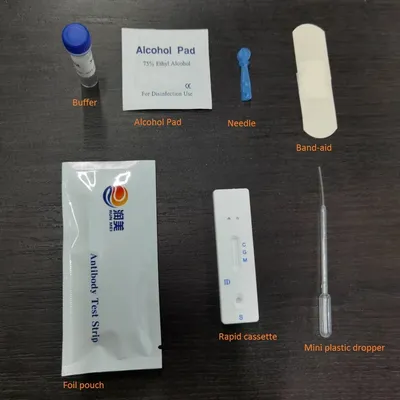
In today's rapidly advancing world of medical technology, staying up-to-date with the latest advancements in testing and diagnostics is crucial. This is especially true for healthcare professionals and individuals seeking to understand and manage conditions such as infectious diseases, reproductive health issues, and genetic diseases. To address this need, Hubei Haws Medical Co., Ltd. has been at the forefront of developing innovative technologies and in vitro diagnostic reagents, making significant strides in molecular diagnosis, immunology, and POCT.
One area that has garnered particular attention is the Epstein-Barr virus (EBV) test, which plays a crucial role in the detection and management of EBV-related illnesses. Understanding the key facts, results, and next steps associated with the EBV test is essential for both healthcare professionals and patients.
Key Facts about the EBV Test:
The EBV test is a blood test that helps detect antibodies produced in response to the Epstein-Barr virus, a common virus that infects most people at some point in their lives.
EBV is known to cause infectious mononucleosis, also referred to as mono or the "kissing disease." Additionally, the virus has been linked to certain types of cancer, including Hodgkin's lymphoma and nasopharyngeal carcinoma.
The test measures the levels of antibodies IgM and IgG in the blood. IgM antibodies typically indicate a recent or current infection, while IgG antibodies suggest a past infection or previous exposure to the virus.
Results of the EBV Test:
Interpreting the results of the EBV test requires an understanding of the antibody levels and their implications. Elevated levels of IgM antibodies often indicate an ongoing or recent EBV infection, while elevated levels of IgG antibodies suggest a past infection or previous exposure to the virus.
It's important to note that while the presence of EBV antibodies may indicate an EBV infection, further testing and clinical evaluation are often necessary to confirm a diagnosis and determine the appropriate course of action.
Next Steps after EBV Test Results:
Depending on the results of the EBV test and the individual's symptoms, healthcare professionals may recommend additional testing, such as a complete blood count (CBC), liver function tests, or imaging studies, to further evaluate the extent of the infection and its potential impact on the body.
In cases of confirmed EBV infection, treatment may focus on managing symptoms, such as fever and sore throat, and addressing any complications that may arise. Rest and hydration are typically recommended, and in severe cases, antiviral medications may be prescribed.
Patients are encouraged to communicate openly with their healthcare providers about their symptoms and concerns, and to follow any recommended treatment plans closely. Additionally, maintaining a healthy lifestyle, including proper nutrition and adequate rest, can support the body's immune response to the virus.
In conclusion, understanding the EBV test, its key facts, results, and next steps is crucial for effective diagnosis, management, and treatment of EBV-related illnesses. As [Company Name] continues to lead the way in developing new detection technologies and in vitro diagnostic reagents, healthcare professionals and individuals can look forward to enhanced tools and resources for addressing a wide range of medical conditions, including infectious diseases, reproductive health issues, genetic diseases, and new coronavirus testing. By staying informed and proactive, we can work towards better health outcomes for all.
